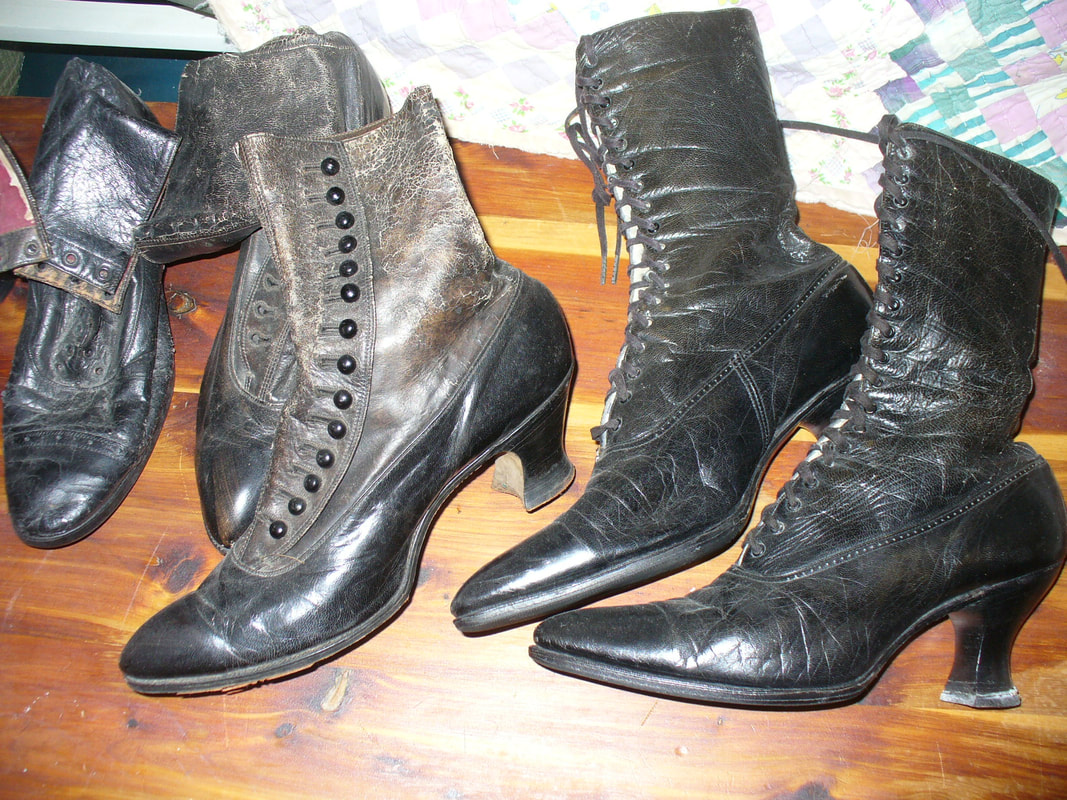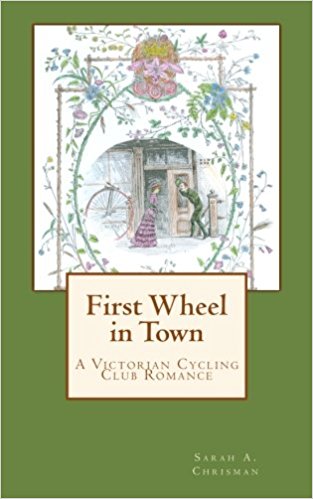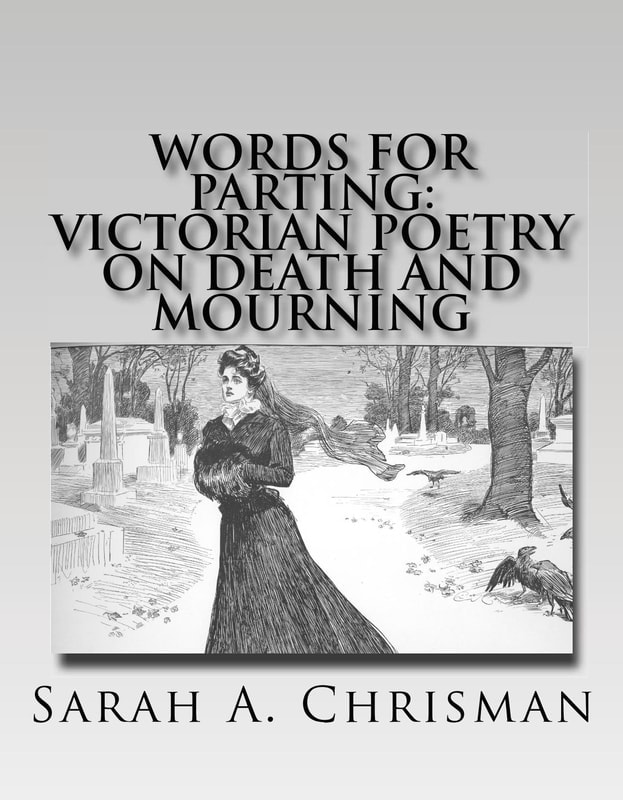"Funny, isn't it?" He agreed.
"I'm sure a hundred years from now people will look at a building like this and say, "Oh, people were just smaller then!"
We both laughed at this because it was a reference to a misconception we hear so often it seems downright trite to us. It comes from something called survival bias: some artifacts survive through time better than others, and the ones which do create a bias of opinion about the past.
Virtually all the articles of clothing on display in museums —especially the shoes— are far too small to fit the modern adults examining them. This is generally explained with a dismissive, "People were smaller back then." (Never mind that if we extend this hypothesis to take the ten-foot ceilings in my 1888 home into account we are left with a comical image of towering beanpoles of humanity stilt-walking through life on minute feet.) In fact, the average heights of people in the late-nineteenth-century are fairly close to their modern counterparts:
—An 1861 government report recorded that the average height of men in Ohio was "a fraction under five feet ten and a half inches.". (Source: http://tinyurl.com/y9zjbyh4)
—An article published in the Port Townsend Leader, February 14, 1895, confirmed: "The English professional classes, who head the list as the tallest of adult males, attain the average of 5 feet, 9.14 inches. Next on the list come the males of all classes in the United States, and a minute fraction behind them come the English of all classes."
—An 1884 reference book listed the required heights of men for acceptance into various branches of the British military:
"The "Royal Horse Guards"…take none but picked men of good character, and over 5 feet 10 inches
ft. in. ft. in.
The Dragoon Guards
take men from 5 8 to 5 11
The Lancers " " 5 7 to 5 9
The Hussars " " 5 6 to 5 8"
Source: 1,000 Answers to 1,000 Questions. London: "Tit-Bits" Offices, 1884. p. 243.
—According to the U.S. Center for Disease Control, the current average height for an American male in 2017 is 5 ft. 9.2 inches: a statistic with no appreciable difference from the figures of 1861 or 1895.
—To come at the question from a different angle, remember that high wheel bicycles are sized to leg-length and we'll examine the average wheels sold in 1883: (N.B. Gabriel is 5'10" and rides a 52 inch wheel.) In 1883 a major American cycling firm reported: "For every 61-inch machine sold, they have sold two 58-inch; sixteen 56-inch; fifty 54-inch; ninety-one 52-inch; one hundred and four 50-inch; sixty-nine 48-inch; thirty-three 46-inch; thirteen 44-inch; and twelve 42-inch." (Source: "Wheel News." The Wheelman. June, 1883., p. 233.)
So, if average heights haven't changed that much since the nineteenth-century, why are the clothes in museums so small? Survival bias.
Clothes that are worn every day tend to be worn, until they wear out. If someone gets tired of a garment that still has some functional use left, they generally pass it on to a friend, relative or charity and then someone else wears it until it wears out. This was even more pronouncedly the case in the past, when clothing was more expensive than at present. The most common sizes go through the most hands before being discarded and they are used until they fall to pieces. In the nineteenth-century even after clothing had deteriorated into bits its usefulness was not yet over: pretty fabrics could be cut up into quilting pieces, doll clothes or other children's toys, and rough materials found use as cleaning rags, furniture stuffing, and any other use a resourceful human mind was capable of devising. After being worn out as rags shredded bits of fabric were finally gathered by rag collectors and turned into pulp for making paper.
The most common items of life rarely survive through time: survival bias works against them. The clothes that do survive long enought to find their way into museums are the ones few people can wear. Teenaged sizes, and clothes worn by particularly small women are more likely to end their days in a museum than clothes worn by an average woman. More women's clothing than men's clothing has survived through time because in the twentieth-century it became socially acceptable for a woman to wear second-hand men's clothing as rough garments: the idea of a man wearing second-hand women's clothing for rough work has never really caught on. Women's fashions also changed more quickly, and items that had become unfashionable were worn less. Leather garments (especially shoes and gloves) on display in museums seem even smaller than they would have at the time they were worn, because leather shrinks over time.
Besides size considerations, the type of clothing which does tend to be saved is that deemed too valuable or special to wear very often: christening gowns, wedding dresses, ball gowns and military dress uniforms (not fatigues).
For us, the most interesting artifacts are the items that were once most common and that represent daily activities. These are the items that were most rarely preserved, and their absence from museums skews the general view of the past. Most people's instant associations with a given era are profoundly shaped by the niche focus carved by time. When people regard museum collections, the prevelance of fancy dress and formal wear —the articles which did not get worn with enough frequency to be worn out— ironically lead them to the faulty conclusion that these were the most common items worn on a daily basis. In actuality, the daily wear during the Victorian era was comprised of a wide variety of clothing which is frequently forgotten, including the first mail-order dresses and denim jeans, and like garments appropriate to the humdrum activities which fill most of life's hours.
We love historical artifacts because they are the physical manifestations of stories: we ask ourselves who used them long ago, and what the world was like when they were new. To understand that world fully, we must also take into account the ages which have passed since then, and remember how an item reflects not only the generation which created it, but also each successive generation who preserved it. To the questions asked above about the item's owner, we must add one more about the item itself: why was it saved? The inquiry opens a new and fascinating path through the labyrinth of the past.









 RSS Feed
RSS Feed